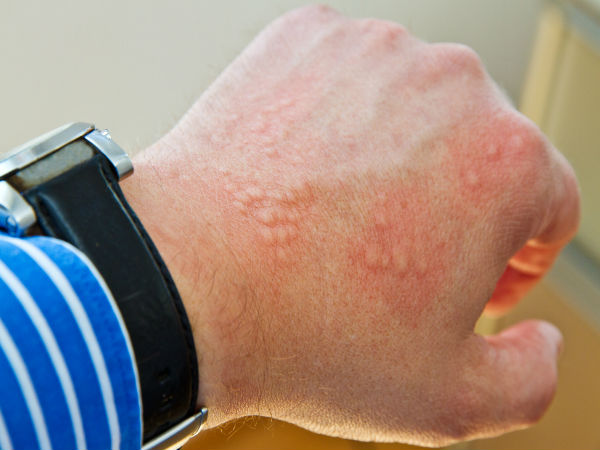Just In
- 3 hrs ago

- 10 hrs ago

- 11 hrs ago

- 14 hrs ago

Don't Miss
- Sports
 Today's IPL 2024 Match Highlights, LSG vs CSK: Five Key Points as KL Rahul powers Lucknow to Crucial Victory
Today's IPL 2024 Match Highlights, LSG vs CSK: Five Key Points as KL Rahul powers Lucknow to Crucial Victory - News
 TDP Candidate Dr G Laxmi Pauses Lok Sabha Election Campaign To Perform Caesarean
TDP Candidate Dr G Laxmi Pauses Lok Sabha Election Campaign To Perform Caesarean - Education
 Exam Pressure Does Not Exist; Studying Punctually is Crucial; Says Aditi, the PSEB 2024 Topper
Exam Pressure Does Not Exist; Studying Punctually is Crucial; Says Aditi, the PSEB 2024 Topper - Movies
 When Karan Johar Revealed Sara Ali Khan And Janhvi Kapoor Once Dated Siblings On KWK 7, Guess Who?
When Karan Johar Revealed Sara Ali Khan And Janhvi Kapoor Once Dated Siblings On KWK 7, Guess Who? - Finance
 Reliance, ONGC, Tata, Adanis: Energy Stocks Didn't Get The Memo Of Bears, Up 12% In 30-Days; 10 Stocks To BUY
Reliance, ONGC, Tata, Adanis: Energy Stocks Didn't Get The Memo Of Bears, Up 12% In 30-Days; 10 Stocks To BUY - Automobiles
 Suzuki Swift Hatchback Scores 4 Star Safety Rating At JNCAP – ADAS, New Engine & More
Suzuki Swift Hatchback Scores 4 Star Safety Rating At JNCAP – ADAS, New Engine & More - Technology
 Dell Introduces AI-Powered Laptops and Mobile Workstations for Enterprises in India
Dell Introduces AI-Powered Laptops and Mobile Workstations for Enterprises in India - Travel
 Journey From Delhi To Ooty: Top Transport Options And Attractions
Journey From Delhi To Ooty: Top Transport Options And Attractions
What Is Epidermolysis Bullosa And How Is It Caused?
A rare kind of inherited condition that causes the blistering of the skin is called epidermolysis bullosa. The trigger behind the occurrence of these skin blisters could be anything from heat, scratching, rubbing, friction or a minor injury. Continue reading to know about the condition in detail.
What Is Epidermolysis Bullosa?
Usually a genetic condition, epidermolysis bullosa causes the formation of blisters on the skin and mucous membranes. In severe cases, blisters might occur inside the body, such as in the lining of the stomach or mouth.

As the condition is mostly inherited, it begins to show up during early childhood years. However, some might not develop symptoms till early adulthood. Mild symptoms of it might heal or at least improve with age. There is medically no permanent cure for this illness. The treatment received would just be to treat the blisters and prevent the occurrence of new blisters.
How Is Epidermolysis Bullosa Caused?
The gene of this disease is usually passed on by one of the parents who already has this disease. In some cases, it is passed on from both the parents. Also, in the affected person, it can also arise as a new mutation.
The outer layer of the skin is called the epidermis and the inner layer is called the dermis. These layers meet at the basement membrane. Epidermolysis bullosa is categorized based on where exactly it occurs.
• Epidermolysis bullosa simplex:
Develops in the outer layer of the skin and is the most common kind. It is seen to affect the feet and palms.
• Junctional epidermolysis bullosa:
Involves the formation of blisters during infancy and is very severe.
• Dystrophic epidermolysis bullosa:
This is linked to a flaw in the gene that is responsible for the production of collagen. Collagen provides strength to the dermis layer and the layers do not join properly when this is missing.

What Are The Symptoms?
The
presence
of
this
condition
makes
the
skin
of
the
person
very
fragile.
Slightest
of
touch
can
lead
to
the
occurrence
of
blisters.
The
typical
signs
and
symptoms
of
this
ailment
are:
•
Skin
tearing
•
Hair
loss
•
Blisters
on
the
scalp
and
skin
•
Skin
looks
thin
•
White
bumps
on
the
skin
•
Loss
of
toenails/fingernails
•
Deformity
of
the
nails
•
Blisters
of
the
eye
•
Excessive
sweating
•
Difficulty
while
swallowing
if
there
are
blisters
in
the
throat
or
mouth
•
Hoarseness
of
voice
due
to
blistering
in
the
throat
•
Breathing
difficulties
when
there
is
blistering
in
the
airway
•
Urination
is
painful
if
there
is
blistering
in
the
urinary
tract
In a rare kind of this condition known as Kindler syndrome, blisters occur from the time of birth.

How Is It Diagnosed?
The appearance of the affected skin might be enough for a doctor to suspect epidermolysis bullosa. Laboratory tests are conducted to confirm the diagnosis.
• Skin biopsy: This is done for immunofluorescent mapping. A sample of the affected skin is taken and examined under a microscope. Light is reflected on the sample during this process to determine the layers of the skin which are affected.
• Genetic testing: This is the best way to confirm the diagnosis as most of the time, this condition is inherited. In this form of testing, a blood sample is analyzed.
• Prenatal testing: In families where there is a history of this condition, family members might need to take up prenatal testing and genetic counseling.
Can Epidermolysis Bullosa Be Cured?
Currently, there is no cure for this condition. However, the following treatment strategies are ideally followed.
• Medication
Pain and itching can be controlled through medicines. If the wounds appear to show widespread infection, then your doctor might prescribe oral antibiotics.
• Surgery
1. Eating could get difficult if there is blistering of the oesophagus that might have caused oesophageal narrowing. In this case, surgical dilation of the oesophagus is done.
2. A feeding pipe can be implanted such that food can be delivered to the stomach directly. This would help with weight gain and the required nutrition support.
3. A skin grating is performed in case scarring affects the functionality of the hand.
4. Abnormal bends in the joints can occur along with the fusion of fingers or toes due to repeated blistering. Surgery is then performed to treat and correct these conditions and restore mobility.
• Rehabilitation therapy
A rehabilitation therapist such as an occupational therapist or a physical therapist can work with the patient to ease the motion and movement limitations caused due to contractures and scarring.
In general, you would need to maintain a healthy lifestyle. Ensure that you keep the wounds clean.
Is Epidermolysis Bullosa Fatal?
Severe forms of epidermolysis bullosa, especially during infancy, can turn out to be fatal. Large blisters with ulcers can lead to several other infections. These would also involve loss of fluids in large quantities. This may lead to fatality.


 Click it and Unblock the Notifications
Click it and Unblock the Notifications





